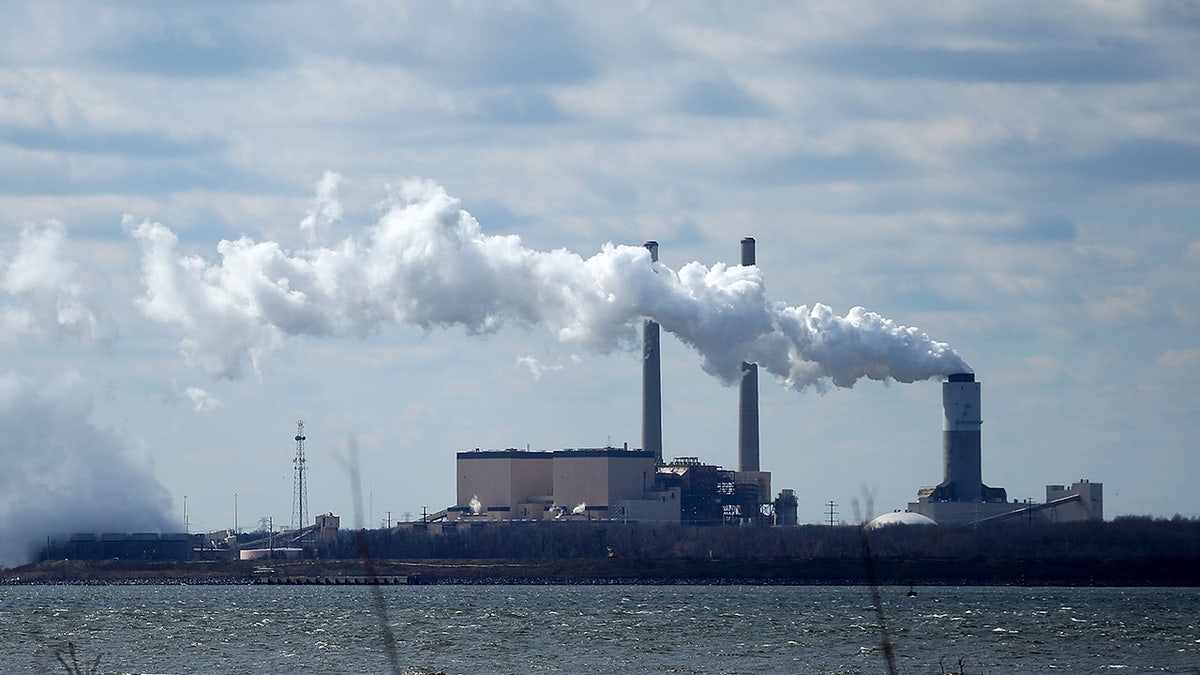Offshore wind is leaving a ‘heavy environmental footprint’ on the East Coast: CFACT’s Craig Rucker
CFACT President Craig Rucker outlines why his group is protesting offshore wind projects while the Biden administration pushes a green energy agenda.
The final coal-fired power plants in New England are slated to shutter in the coming years, making it the second region to phase out the energy source that powered the U.S. economy for decades.
In an announcement late last month, New Hampshire-based power provider Granite Shore Power said it had reached an agreement with federal officials to shutter its Schiller Station in 2025 and its Merrimack Station by mid-2028. The action underscores the region's and, more broadly, the nation's steady march toward a future dominated by green energy. Environmental activists have called for this change for years — energy advocates have warned against it.
"Everybody in our region is finally going to be breathing cleaner air," Johanna Neumann, the senior director of Environment America's Campaign for 100% Renewable Energy, told Fox News Digital in an interview. "I think the market has finally caught up to the reality — these coal plants are shutting down and being replaced with renewable energy infrastructure."
BIDEN ADMIN ISSUES ENERGY EFFICIENCY RESTRICTIONS ON KEY POWER GRID TECHNOLOGY

The Schiller Station in Portsmouth, N.H., is seen. (Gordon Chibroski/Portland Press Herald via Getty Images)
Environmental activist organizations have for years sought to ensure the closure of both New Hampshire coal plants, arguing the facilities had contaminated nearby water sources while emitting large amounts of soot into the air, threatening public health.
The Sierra Club, one of those groups that pushed for the shutdown of the plants, applauded the announcement and noted it means New England is the second U.S. region after the Pacific Northwest to be coal-free. New Hampshire Sierra Club Senior Organizer Cathy Corkery said locals had "unjustly shouldered the burden of health and safety concerns" associated with the facilities.
TRUCKERS CHALLENGE BIDEN ADMINISTRATION OVER CLIMATE CRACKDOWN ON ELECTRIC BIG RIGS
Together, the two facilities, which were first constructed roughly six decades ago, have a capacity of 560 megawatts, enough to power hundreds of thousands of homes. While the plants, and other coal stations in the region, once played a more central role in powering the grid, they have recently largely been inactive and used only in times of high demand or supply crunches.
"From our earliest days as owners and operators, we have been crystal clear; while our power occasionally is still on during New England’s warmest days and coldest nights, we were firmly committed to transitioning our facilities away from coal and into a newer, cleaner energy future," said Granite Shore Power CEO Jim Andrews.

The first operating turbine at the South Fork Wind farm is photographed on Dec. 7, 2023. Granite Shore Power said the sites of its soon-to-be-closed coal plants will store power generated from offshore wind. (AP Photo/Julia Nikhinson)
As part of the announcement, Andrews added that both coal plants will be redeveloped into the state's first-of-their-kind "renewable energy parks." Once they officially close, the sites will be converted by Granite Shore Power into solar and utility-scale energy storage facilities.
In a statement, a spokesperson for Granite Shore Power said the company has been public about its intentions to transition its fleet away from coal for six years and that while that transition occurs, it will continue to support the regional grid. According to the spokesperson, the plans would include retaining workers at the Schiller and Merrimack sites and even increasing its overall workforce.
"When it comes to clean energy, the message in America today is clear: companies want to develop it, investors want to finance it, and American consumers and businesses want to buy it," said Ray Long, president and CEO of the American Council on Renewable Energy. "This historic agreement marks a significant step in the direction of America’s clean energy future."
FEDERAL COURT STRIKES DOWN BIDEN'S CLIMATE RULE FOR STATES
The American Clean Power Association, another group that advocates for green energy development, pointed to data showing most new electricity generation nationwide is green and has created thousands of new jobs.

A solar farm sits in Mona, Utah, on Aug. 9, 2022. (AP Photo/Rick Bowmer, File)
However, the announcement that another U.S. region is on a glide path to a coal-free future earned heavy criticism from some experts who noted the importance of having baseload, dispatchable power generation. While renewable sources like wind and solar are intermittent, or heavily dependent on weather conditions, coal, natural gas and nuclear can quickly be turned on in times of high demand.
According to the Energy Information Administration, coal, natural gas and nuclear power plants produce 49%, 54% and 93% of their listed capacity, respectively, while solar panels produce just 25% and wind turbines produce 34% of their listed capacity.
INTERNATIONAL CODE COUNCIL REJECTS AGGRESSIVE GREEN ENERGY HOME BUILDING CODE MANDATE
"There's a concerted effort to shift away from reliable sources of electricity generation to unreliable sources," said Daren Bakst, director of the Competitive Enterprise Institute’s Center for Energy and Environment. "And ultimately the impact is going to be less reliable electricity, higher prices for Americans — it's going to have a disproportionate impact on the poor."

The coal-fired Brandon Shores Power Plant in Baltimore is another that will soon shutter amid environmental opposition. (Mark Wilson/Getty Images)
"You have to be able to call upon electricity sources when you need it, and you need it to be able to have consistent electricity, to be able to flip on the switch. You can't have that with intermittent sources. Right now, it's impossible to have that," Bakst continued. "Therefore, you need baseload electricity generation so that you can have consistent electricity when you need it."
JOE MANCHIN THREATENS TO OPPOSE BIDEN NOMINEES OVER UPCOMING POWER PLANT CRACKDOWN
ISO-New England, the region's independent grid operator, states on its website that coal is a critical tool in ensuring power "on the coldest winter days when natural gas supply is constrained." It adds that inadequate infrastructure to transport natural gas — a major power source in New England — harms natural-gas-fired plants' ability to get the fuel they need to perform, creating an "energy-security risk."
The operator declined to comment on Granite Shore Power's coal plant closures.
"The shutdown of Merrimack and Schiller Stations is a major step backwards for New England's energy consumers, who need a mix of baseload energy sources, including coal, to ensure electric reliability," Michelle Bloodworth, president and CEO of America’s Power, a coal power trade group, told Fox News Digital.
"Their closure will leave families at greater risk of power outages and more dependent on natural gas, further exposing them to volatile electricity and natural gas prices," she continued. "Amid rapidly increasing demand for electricity, these shutdowns run directly contrary to [ISO-New England] guidance and will undermine electric reliability and affordability."
CLICK HERE TO GET THE FOX NEWS APP
In response largely to environmental and climate concerns, a staggering 22.3 gigawatts of coal-fired electric generating capacity were retired in 2022 and 2023. Another 13 gigawatts are slated to be retired in 2024 and 2025.
Still, across the U.S., coal power generates more than 16% of total electricity, more than solar and wind combined, the latest federal data shows. As recently as 2015, coal generated more electricity than any other power source and, years earlier, generated about half of all power in the U.S.



























